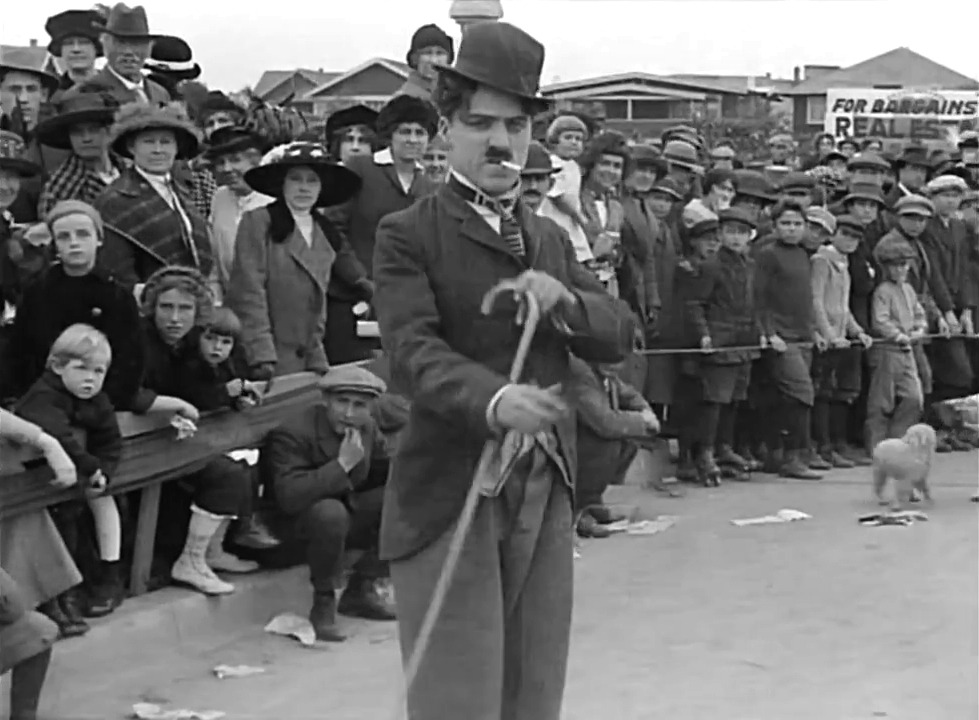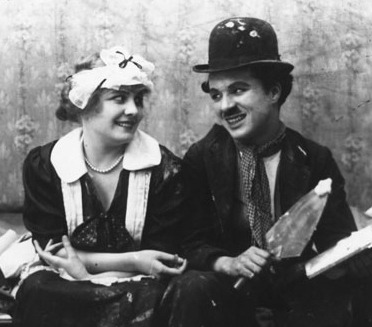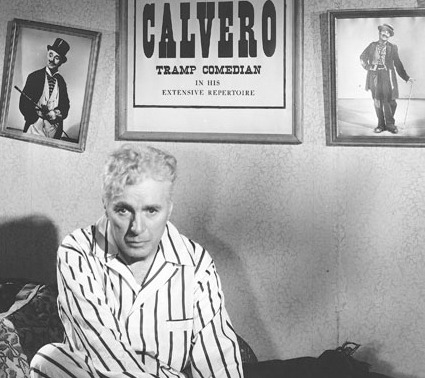Many movie enthusiasts probably know Charlie Chaplin as a prolific director, actor, and writer, but only a few people knew about his personal life and how he rose into becoming one of the greatest actors in film history. The success of Chaplin in the industry has totally overshadowed the hardships that he went through during his childhood until he became an adult, but that is justifiable, as most of us would want to remember Chaplin for his success and not for his controversies. But in order to know more about his life, we must discuss who he was as a child, a teenager, and an adult. Here is a brief history of Charlie Chaplin’s life.
Chaplin’s Childhood
Charles Spencer Chaplin was born on April 16, 1889, in an unknown location in London, England. His father was Charles Chaplin Sr., a music hall performer, and his mother was Hannah Hill, a dancer and singer at music halls as well. Chaplin Sr. had a severe addiction to alcohol during Chaplin’s birth and childhood, and he left his child, along with his stepson Sydney Hill to be taken care of only by their mother.
Chaplin’s mother struggled to keep working as a musical performer, as she was bothered by her slowly fading voice and her constant headaches. During one show, Hill was unable to sing a song; however, a five-year-old Chaplin was able to act as her replacement in order to keep the show going. It was during that performance that her mother saw his potential to be a great performer in the future.
When Hill’s voice was unable to recover, she was forced to find other jobs to take care of her family. She eventually found work as a dressmaker, which she liked since she is able to work at home and keep a close eye on her children. However, their situation would soon change when Hill’s headaches became severe, and it prompted her to stay at an infirmary and later, a mental asylum, as it will soon be found out that she is suffering from syphilis.
With no one to take care of the children, both Charlie and his older brother Sydney were sent to the London District School for Paupers. Soon, Charlie would find ways to earn money at a young age. He became a member of the Eight Lancashire Lads in 1897, a troupe that specialized in clog dancing. The job at the troupe only allowed him to hone his skills in performing, but it wasn’t enough to fund his expenses. According to Chaplin, he worked as a toymaker, a newsvendor, and many more assistance-based jobs when he was also working as a member of the troupe.
Chaplin’s Biggest Breaks
Charlie Chaplin’s first biggest break on stage happened when he played a pageboy in a production of Sherlock Holmes by Charles Frohman. It was in this production that he was able to travel around England in three nationwide tours. The audience and the production staff were so amazed by Chaplin’s performance that he was assigned to play as the pageboy again, but this time in the show starring William Gillette, who is the most popular Sherlock Holmes during that time. He moved on from the Sherlock Holmes production in 1906, after two-and-a-half years of playing as the pageboy.
The second biggest break for Chaplin happened in 1908 when he was part of the Fred Karno pantomime troupe. In the popular show titled A Night in an English Music Hall, he played as a drunk man, which is a character that will stick with him for many years but would soon be refined and reworked as The Tramp character. Because of his stellar performance, he was noticed by Mack Sennett, a film producer for Keystone Studios. It was during their meeting that he was given a contract to work as an actor for many films in 1914.
Keystone to Essanay
During his tenure at Keystone Studios, he has starred in more than 30 films, with some even being directed by him. His first appearance as an actor was a short film titled Make a Living in 1914, but it was not until the movie Kid Auto Races at Venice released in the same year that he was able to get the attention of the audiences because of his peculiar character that wore tight clothes, a small bowler hat, and a weird mustache. Although that character didn’t have a name back then, it will soon be known as The Tramp in the next films.
It was also in Keystone Studios that he met Mabel Normand, an actor and director who taught him many things about being a film artist and a director. However, he would also frequently clash with Normand over ideas and stories for the films at Keystone. However, Mack Sennett gave him a chance to direct his own movies, and the producer’s decision would eventually become fruitful, as Chaplin’s films were very successful.
Chaplin’s first full-length film appearance was in the 1914 film Tillie’s Punctured Romance, which was direct not by him but by Mack Sennett. The film was 74 minutes long, but the 2003 restored version was 82 minutes after adding scrapped scenes into the movie. A few months after the release of Tillie’s Punctured Romance, Chaplin asked Sennett for a raise on his salary. He wanted $1,000 per week, but Sennett refused to pay that amount, leading Chaplin to leave that studio and find better offers.
Charlie Chaplin then came to Essanay, who paid him $1,250 a week; more than what he asked Keystone and with a signing bonus of $10,000. He made a total of 14 films under Essanay, with one being The Tramp in 1915, which is a movie that solidified his character into a household name on the silver screen. Also, in most of these 14 movies, he was partnered with Edna Purviance as his leading lady. The actress would then continue to star alongside Chaplin in 8 years and 35 movies.
Movies under Mutual Fims
After his contract with Essanay Studios ended, he then went to sign a contract with Mutual Company, who agreed to pay his $670,000 a year. With Chaplin now a superstar in the movie industry, all of the movies that he directed and starred in under Mutual were a commercial success. Some of the most popular movies that he made during that time were Easy Street, The Adventurer, The Cure, and The Immigrant.
According to Chaplin, his time working for Mutual was the happiest that he has ever been in his acting career, although he did state that the movies released under the company were formulaic and that he has no control over the creative decisions in Mutual. The lack of freedom in creativity led to Chaplin’s slow production when it comes to creating movies, and this led him to be let go by Mutual.
Working for First National
Chaplin decided that he can only work for a company that allows him to create stories and films with full control while also allowing him to release it in his own decision. The one that offered him these conditions was First National, who offered him $1 million in exchange for eight Chaplin movies.
Because of his freedom to direct, produce, and write movies, it was in First National that he was able to create some of the best films of his career, which included A Dog’s Life, The Kid, The Idle Class, and The Pilgrim. Unfortunately, First Nation terminated their contract with Chaplin, citing that they could not give more money for Chaplin to produce his films.
United Artists and The Great Dictator
In 1919, Charlie Chaplin formed a distribution company title United Artists, along with D.W. Griffith, Douglas Fairbanks, and Mary Pickford. The company was considered to be revolutionary at that time, as it was a distributor created by artists who want to fund their movies themselves without requesting money from other companies was fairly new.
In United Artists, all of the films that he directed and starred in were feature films, as the industry was slowly transitioning to making full-length movies mainstream instead of short films. Like his First National films, his movies under United Artists are quite iconic as well. The 1925 film The Gold Rush received Academy Award Nominations for its music and sound recording, and the 1931 film City Lights was able to get $5 million on the box office.
However, his most well-praised movie is arguably the 1940 film The Great Dictator, which features many firsts for Chaplin in his career. It was the first Chaplin-directed movie that has voice and dialogue, and it was also the first movie that he acknowledged the retirement of his Tramp character that was last seen in the previous movie, Modern Times. Despite being his first “talkie” film, Chaplin did an excellent job writing the story, directing the film, and acting as two characters in The Great Dictator. Because of the film’s wide critical acclaim, The Great Dictator was nominated for five Academy Awards, including Best Actor, Best Writing (Original Screenplay), and Outstanding Production (Best Picture).
United States Ban, Limelight, and the Honorary Academy Award
During the London premiere of his last United Artists film Limelight in 1952, Chaplin was informed that he is banned from returning to the United States after he was accused of supporting communism and being Anti-American. Although it broke his heart to hear the news, he accepted his barring and did not comment on the accusations of the government against him.
As he was still in London when he heard of the news, he and his family were forced to find a new home in Europe. With him being unable to transfer his assets in the US to Europe, his wife Oona O’Neill volunteered to work on transferring his money from the US to his European accounts. In addition, O’Neill is also the one who assisted in the closing of Chaplin’s studio in the US, as well as their former home. Chaplin’s family was able to move to Switzerland and bought a mansion named Manoir de Ban. A few years after their migration to Switzerland, Chaplin produced and directed the 1957 film A King in New York, which also starred him as the lead character. Because of his declining health, he could not act in his films any more, but he was still able to direct A Countess from Hong Kong in 1967.
In 1971, he was invited by The Academy of Motion Picture Arts and Sciences to receive an Honorary Oscar for his contributions to the film industry. He gladly accepted the invitation and travel to the United States after almost 20 years since his ban. Many people suggested that the award was supposed to serve as an apology by The Academy, the government, and the American people over Chaplin’s banning.
On Christmas Day in 1977, six years after receiving the Honorary Academy Award, Charlie Chaplin died at Manor de Ban at the age of 88.



